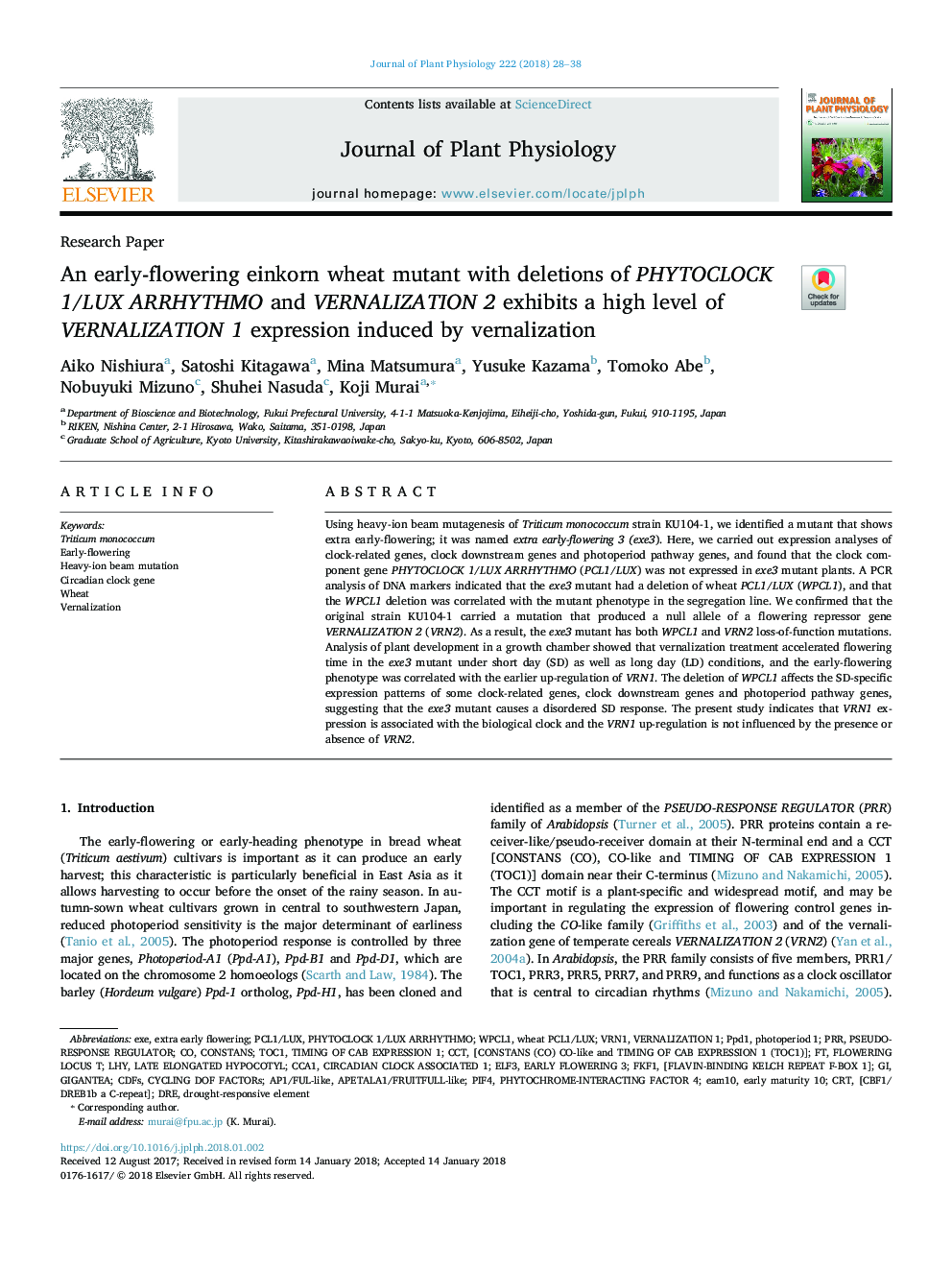| Article ID | Journal | Published Year | Pages | File Type |
|---|---|---|---|---|
| 8386941 | Journal of Plant Physiology | 2018 | 11 Pages |
Abstract
Using heavy-ion beam mutagenesis of Triticum monococcum strain KU104-1, we identified a mutant that shows extra early-flowering; it was named extra early-flowering 3 (exe3). Here, we carried out expression analyses of clock-related genes, clock downstream genes and photoperiod pathway genes, and found that the clock component gene PHYTOCLOCK 1/LUX ARRHYTHMO (PCL1/LUX) was not expressed in exe3 mutant plants. A PCR analysis of DNA markers indicated that the exe3 mutant had a deletion of wheat PCL1/LUX (WPCL1), and that the WPCL1 deletion was correlated with the mutant phenotype in the segregation line. We confirmed that the original strain KU104-1 carried a mutation that produced a null allele of a flowering repressor gene VERNALIZATION 2 (VRN2). As a result, the exe3 mutant has both WPCL1 and VRN2 loss-of-function mutations. Analysis of plant development in a growth chamber showed that vernalization treatment accelerated flowering time in the exe3 mutant under short day (SD) as well as long day (LD) conditions, and the early-flowering phenotype was correlated with the earlier up-regulation of VRN1. The deletion of WPCL1 affects the SD-specific expression patterns of some clock-related genes, clock downstream genes and photoperiod pathway genes, suggesting that the exe3 mutant causes a disordered SD response. The present study indicates that VRN1 expression is associated with the biological clock and the VRN1 up-regulation is not influenced by the presence or absence of VRN2.
Keywords
Related Topics
Life Sciences
Agricultural and Biological Sciences
Agronomy and Crop Science
Authors
Aiko Nishiura, Satoshi Kitagawa, Mina Matsumura, Yusuke Kazama, Tomoko Abe, Nobuyuki Mizuno, Shuhei Nasuda, Koji Murai,
